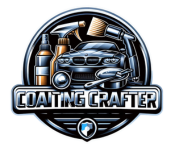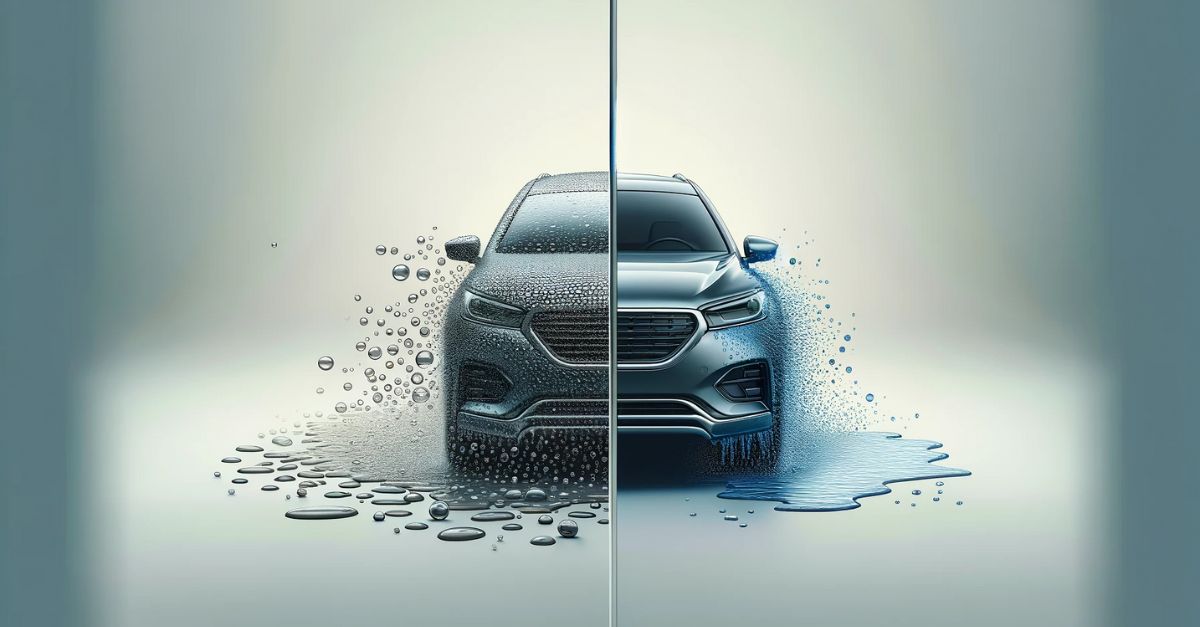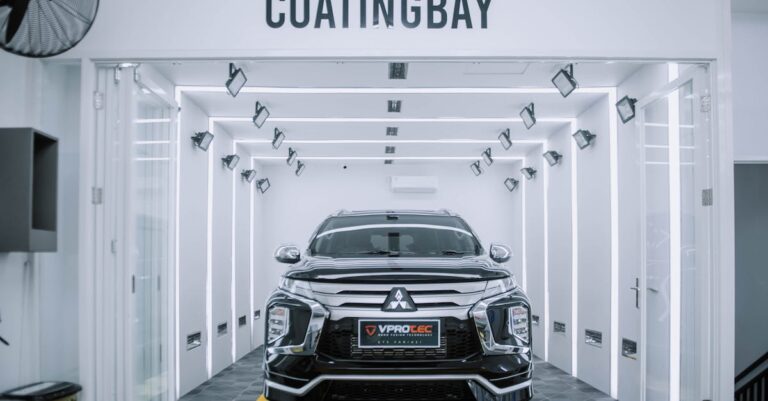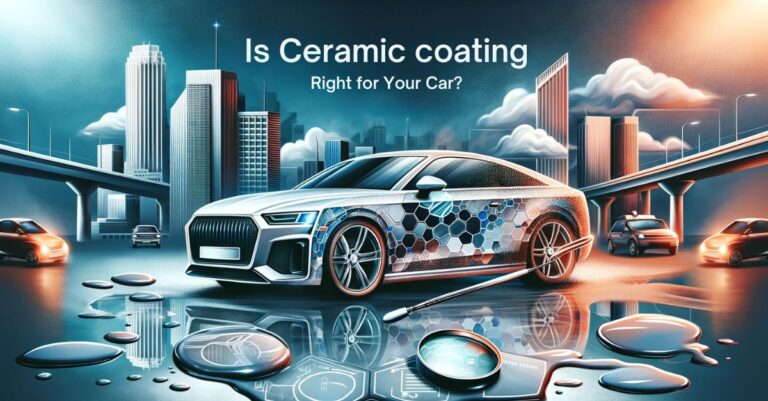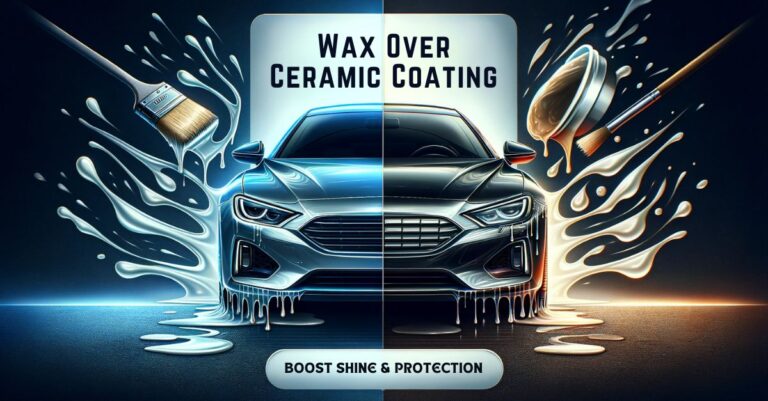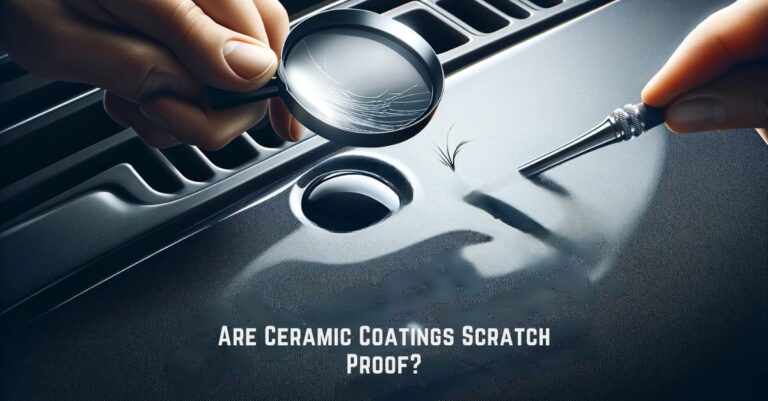Hydrophobic vs. Hydrophilic Coatings: Which to Choose?
When it comes to protecting our vehicles, we’re always on the lookout for the best solutions. Ceramic coatings have revolutionized car care, but there’s a debate we can’t ignore: should ceramic coating be hydrophobic or hydrophilic?
Understanding the science behind these terms isn’t just for chemists. It’s crucial for us to make informed decisions about our car’s maintenance. We’ll dive into the advantages of each type and how they affect your car’s longevity and appearance.
Stay with us as we explore the world of ceramic coatings. We’ll help you decide which property is best for your ride, ensuring it stays pristine and protected against the elements.
Advantages of Ceramic Coating
When we delve into the world of ceramic coatings, we quickly realize the myriad of benefits they offer. Longevity is a key advantage; a quality ceramic coating may last anywhere from two to five years, significantly outlasting traditional wax. The protective layer it forms is incredibly strong, warding off various contaminants such as dirt, water spots, and even UV rays that can cause oxidation and fading.
Another major perk is the ease of cleaning. Hydrophobic coatings, for instance, ensure that water beads up and rolls off the surface, taking most of the dirt and grime with it. This feature not only keeps our cars looking cleaner for longer but also makes maintenance a breeze. Less dirt means fewer washes required, saving us both time and water.
In addition to cleanliness, the aesthetics cannot be overstated. A ceramic coating provides a high-gloss finish that makes a vehicle look pristine and far more fetching than one without. This shine isn’t just superficial; it’s the result of a strong bond formed with the paintwork that enhances its natural luster.
Furthermore, there’s a misconception that ceramic coatings are prone to scratching. The truth is, they offer a scratch-resistant surface — not scratch-proof, but it does provide an additional layer that can withstand minor abrasions far better than a car’s clear coat alone.
Lastly, though not exclusive to any type of coating, chemical resistance is a notable advantage. Our vehicles are often subjected to bird droppings, tree sap, and harsh chemicals, all of which can etch into and degrade the paint. Ceramic coatings create a barrier that helps prevent these substances from causing long-term damage.
| Benefit | Description |
|---|---|
| Longevity | Lasts 2-5 years, surpassing traditional wax. |
| Ease of Cleaning | Hydrophobic properties lead to less dirt and easier maintenance. |
| Aesthetic Appeal | Provides a deep, glossy finish enhancing the car’s look. |
| Scratch Resistance | Offers a layer that withstands minor abrasions better than clear coat alone. |
| Chemical Resistance | Protects against environmental contaminants and chemicals. |
Taking into account these advantages, ceramic coatings undoubtedly offer a higher standard of protection and aesthetic enhancement for our vehicles. Whether hydrophobic or hydrophilic, the benefits lean towards preserving our car’s value and appearance.
What Does Hydrophobic Mean?
When we talk about hydrophobic properties, we’re referring to the ability of a surface to repel water. “Hydrophobic” literally means “water-fearing”, and in the context of ceramic coatings, it’s a term that signifies a key benefit. Surfaces with hydrophobic coatings create an angle of contact between the water and the surface that is greater than 90 degrees, causing water beads to form and easily slide away.
The science behind hydrophobicity lies in the chemistry of the coating itself. These ceramic coatings are formulated with materials like silicon dioxide, which forms a molecular bond with the car’s surface. This bond leads to a microscopic, uneven texture that prevents water from clinging to the surface. Instead of spreading out, water beads up, which is a remarkable sight often touted in demonstrations of quality ceramic coatings.
Benefits of Hydrophobic Ceramic Coatings:
- Ease of Cleaning: Dirt, grime, and other contaminants often accompany water. When the water beads and rolls off, it naturally takes these unwanted guests along for the ride. This property drastically minimizes the effort required to keep the vehicle clean.
- Enhanced Protection: When water doesn’t have the chance to pool, there’s less risk for water spots or etching, which can occur due to minerals left behind as the water evaporates.
- Maintained Aesthetics: Water beading on the surface not only provides an interesting visual effect but also maintains the high-gloss finish of the ceramic coating by preventing water spots.
It’s important to note that the hydrophobic effect goes beyond just looking cool. It is a crucial aspect of the protective nature of ceramic coatings. By repelling water, the coating ensures that elements like acid rain, snow, and muddy water have less of a chance to damage the paint. Additionally, it makes the cleaning process less labor-intensive and more infrequent, saving both time and money in maintenance.
Benefits of Hydrophobic Ceramic Coating
When we delve into the world of automotive protection, the term “hydrophobic” often surfaces as a premier feature of ceramic coatings. These advanced coatings afford an array of benefits that justify their popularity among car enthusiasts. Firstly, water-repellent properties ensure that rain and liquid contaminants do not cling to the car’s surface. As a result, cleaning becomes a breeze. Dirt and grime have a harder time sticking to hydrophobic coatings, simplifying the maintenance routine significantly.
- Quick and easy cleaning
- Less dirt and grime adherence
Moreover, hydrophobic ceramic coatings contribute to the longevity and preservation of your car’s exterior. Thanks to their ability to fend off acidic contaminants such as bird droppings and tree sap, these coatings prevent chemical stains and etching. By forming a robust barrier, the risk of these substances bonding with and harming the paint is significantly reduced.
- Added protection against chemical stains
- Reduction in paint etching incidents
Another noteworthy advantage is the capacity to maintain aesthetics. Cars treated with hydrophobic coatings consistently display a slick, glossy finish that’s not only visually stunning but also resistant to UV-induced fading and oxidation. This ensures your vehicle retains its showroom glow for longer periods, reflecting an image of well-maintained elegance.
- Sustained high-gloss finish
- UV protection for long-lasting beauty
Lastly, the slick coated surface also helps in reducing the accumulation of water spots. These persistent blemishes occur when water evaporates and minerals are left behind on the paint. Hydrophobic coatings encourage water to bead up and roll off, lessening the likelihood of spot formation. Vehicles with hydrophobic protection are endowed with a clear, spotless appearance after rainfall or a wash, indicative of a well-protected exterior that’s both durable and visually appealing.
- Minimized water spot formation
- Clear exterior after exposure to water
Drawbacks of Hydrophobic Ceramic Coating
When discussing hydrophobic ceramic coatings, it’s essential to address not only their numerous benefits but also the potential drawbacks that can influence a car owner’s decision. Despite the allure of a self-cleaning effect and enhanced protection, certain aspects may deter some from choosing hydrophobic ceramic coatings.
Firstly, professional application is strongly recommended for hydrophobic ceramic coatings. Unlike traditional waxes or sealants, these coatings require a clean and controlled environment to ensure proper bonding with the car’s surface. If not applied correctly, the longevity and performance of the coating can be compromised. This requisite can lead to increased initial costs due to the need for professional services.
Secondly, hydrophobic coatings are not invulnerable. While they provide a significant level of protection, they can still sustain scratches and chips from road debris. Owners should not have a false sense of security; regular maintenance is still vital. Without proper care, even a hydrophobic ceramic coating can’t maintain its effectiveness, and damage to the underlying paint might go unnoticed.
Moreover, when damaged, repairing a ceramic-coated surface can be more complex and expensive. The coating must be partially or fully removed before addressing the underlying damage, followed by re-application to ensure continuity of protection. This process can add to the long-term maintenance costs that car owners must be prepared for.
There’s also the matter of environmental considerations. Some argue that the chemicals used in hydrophobic coatings may have a greater environmental impact during manufacture and disposal compared to hydrophilic options. The life-cycle perspective is thus an important factor for environmentally conscious consumers.
Cost-benefit analysis is crucial for potential buyers. While hydrophobic ceramic coatings offer exceptional benefits, they also come with a set of considerations that may outweigh the advantages for some car owners. It’s paramount for individuals to assess their specific needs, usage patterns, and budget before making an informed decision.
What Does Hydrophilic Mean?
When we delve into the science of ceramic coatings, the term “hydrophilic” often comes into play. Unlike its hydrophobic counterparts, hydrophilic coatings possess an affinity for water. This characteristic means that they attract water, causing it to spread into a thin, even layer across the coated surface. At first glance, this may seem counterintuitive for a car’s protection, but hydrophilic coatings hold a few key advantages.
The science behind hydrophilic coatings is rooted in their ability to form hydrogen bonds with water molecules. These bonds effectively reduce water’s surface tension, encouraging it to flatten upon contact with the treated surface. This action not only prevents water from forming beads but also aids in the self-cleaning effect. Dirt and contaminants are less likely to stick to the vehicle’s surface, as they can be easily washed away when water disperses over the area.
Benefits of Hydrophilic Coatings include:
- Enhanced self-cleaning properties
- Reduction in dust and dirt accumulation
- Improved visibility during wet conditions for windows treated with hydrophilic films
On the flip side, hydrophilic coatings leave no room for beading, a popular feature praised in hydrophobic coatings for its glossy appearance and ease of cleaning. Yet, for some car owners, the utilitarian advantages of hydrophilic coatings, particularly the self-cleaning aspect, might outweigh aesthetic preferences. It’s also worth noting that in drier climates, where water conservation is a priority, the ability of hydrophilic coatings to use less water during cleaning could be a deciding factor.
Understanding the unique properties of hydrophilic coatings can help us gauge their suitability for different vehicles and environments. The choice between hydrophilic and hydrophobic layers comes down to individual needs and the specific circumstances under which the car is consistently exposed. Factors like local weather conditions, typical road contaminants, and the owner’s maintenance habits all play crucial roles in this decision.
Benefits of Hydrophilic Ceramic Coating
When considering the advantages of hydrophilic ceramic coating, self-cleaning capabilities are often at the forefront. Due to its affinity with water, hydrophilic coatings make it harder for dirt and grime to stick, leading to a car that remains cleaner for longer periods. When rain hits the surface, it spreads out and carries away the dirt, a process significantly easier than manually washing the vehicle.
Moreover, these coatings are especially beneficial in improving visibility during wet conditions. For safety-conscious drivers, this is a crucial factor. Water spreading over the car’s surface, particularly on the windshield, enhances wiper performance and improves the driver’s view during heavy downpours.
In terms of maintenance, hydrophilic coatings can be considered less demanding. Since water helps clean the surface, there’s less need for frequent washes, which can conserve both water and time. This is particularly relevant in regions where water scarcity is an issue, making the effective use of resources a high priority.
The protective aspect should not be underestimated either. Hydrophilic ceramic coatings provide a durable layer over the vehicle’s paint, reducing the risk of scratches and other forms of minor damage. While they might not create the same glossy finish as hydrophobic coatings, their protective qualities are undiminished, ensuring the car’s exterior remains intact over time.
Another point to consider is the environmental angle: with less water usage and fewer cleaning agents required, hydrophilic coatings can be seen as a more eco-friendly choice. Fewer chemicals running off into drains equals a reduced impact on local waterways and ecosystems.
While exploring the benefits of hydrophilic ceramic coatings, it’s essential to weigh these factors against one’s personal preference, local climate, and the vehicle’s usage patterns. Each coating type offers unique advantages, and understanding these can lead to an informed choice that aligns with our individual needs and values.
Drawbacks of Hydrophilic Ceramic Coating
When we consider hydrophilic ceramic coatings, it’s important to acknowledge not only their benefits but also their limitations. Understanding these drawbacks ensures that we make informed decisions about our vehicle’s care.
One of the primary concerns with hydrophilic coatings is their durability. These coatings, designed to attract water, may not have the same longevity as their hydrophobic counterparts. The constant interaction with water can lead to a faster degradation of the coating, which means a sooner reapplication is often necessary, leading to increased maintenance costs over time.
Performance Under Various Weather Conditions
Hydrophilic coatings are also challenged in areas with less rainfall. Without regular water contact to activate the self-cleaning effect, dust and dirt can accumulate on the vehicle’s surface. This can negate one of the main advantages of hydrophilic coatings.
- Less effective in dry climates: Inconsistent self-cleaning where rain is scarce
- Dependent on water: May require manual washing in prolonged dry spells
Compatibility with Vehicle Usage
Additionally, those who frequently drive through rough terrains or off-road may find that hydrophilic coatings do not offer the best protection compared to hydrophobic variants. The gentle sheeting of water can be less effective in removing larger particles or heavy mud.
- Struggles with heavy soiling: May not easily remove tough contaminants
- Limited protective action: Not ideal for vehicles subject to extreme conditions
Cost-Benefit Analysis
The initial installation cost is another aspect to consider. Hydrophilic coatings can be pricier due to the advanced technology and materials needed. When the potential increase in maintenance frequency due to lower durability is factored in, vehicle owners may find the investment questionable.
We must weigh the cost against the frequency of required reapplications and compare it with other available options. While the allure of a self-cleaning surface is strong, its practicality might be limited for those who live in arid regions or use their vehicles in demanding environments.
Choosing the Right Property
When deciding whether to opt for a hydrophobic or hydrophilic ceramic coating for our vehicles, it’s essential to consider our specific needs and circumstances. Hydrophobic coatings are best for those of us who prioritize durability and ease of maintenance. Their ability to repel water and dirt means that vehicles stay cleaner for longer, making them a popular choice for everyday convenience.
On the other hand, hydrophilic coatings are ideal for drivers who seek the self-cleaning benefits that come with their affinity for water. These coatings are especially useful in areas with frequent rainfall, as the water helps to remove dirt and grime. They can also enhance visibility during wet weather conditions, which contributes to safer driving experiences.
Here are key factors we should consider when choosing between the two:
- Climate: If we live in an area with a lot of rain, hydrophilic coatings may offer more practical benefits. Conversely, hydrophobic coatings might be more appropriate in drier climates.
- Maintenance: Those of us seeking low maintenance options will likely prefer hydrophobic coatings.
- Frequency of Use: For vehicles in constant use, a hydrophobic coating can provide longer-lasting protection against the elements.
- Environmental Conditions: If our car is frequently exposed to harsh conditions, such as salt spray or industrial pollutants, a hydrophobic coating can offer better protection.
It’s also important to note that the cost can differ significantly between hydrophobic and hydrophilic coatings. Generally, hydrophobic coatings tend to last longer, which could mean fewer applications over the lifetime of the vehicle, potentially offsetting the initial higher cost. In contrast, hydrophilic coatings might need more frequent reapplication, which could lead to higher long-term maintenance expenses.
Ultimately, our choice depends on a careful assessment of our lifestyle, budget, and the environmental conditions our vehicle will face. By taking these factors into account, we’ll ensure that the ceramic coating we choose provides the best possible protection and value for our investment.
Conclusion
Deciding whether to go for a hydrophobic or hydrophilic ceramic coating boils down to what we value most for our vehicles. If long-lasting protection and minimal upkeep are at the top of our list, hydrophobic is the way to go. But if we’re after that constant clean look and have the conditions to support it, hydrophilic coatings offer a great solution. Weighing up the factors like climate, our car’s usage, and budget will guide us to the best choice for our individual needs. Let’s make an informed decision that aligns with our lifestyle and keep our cars looking their best.
